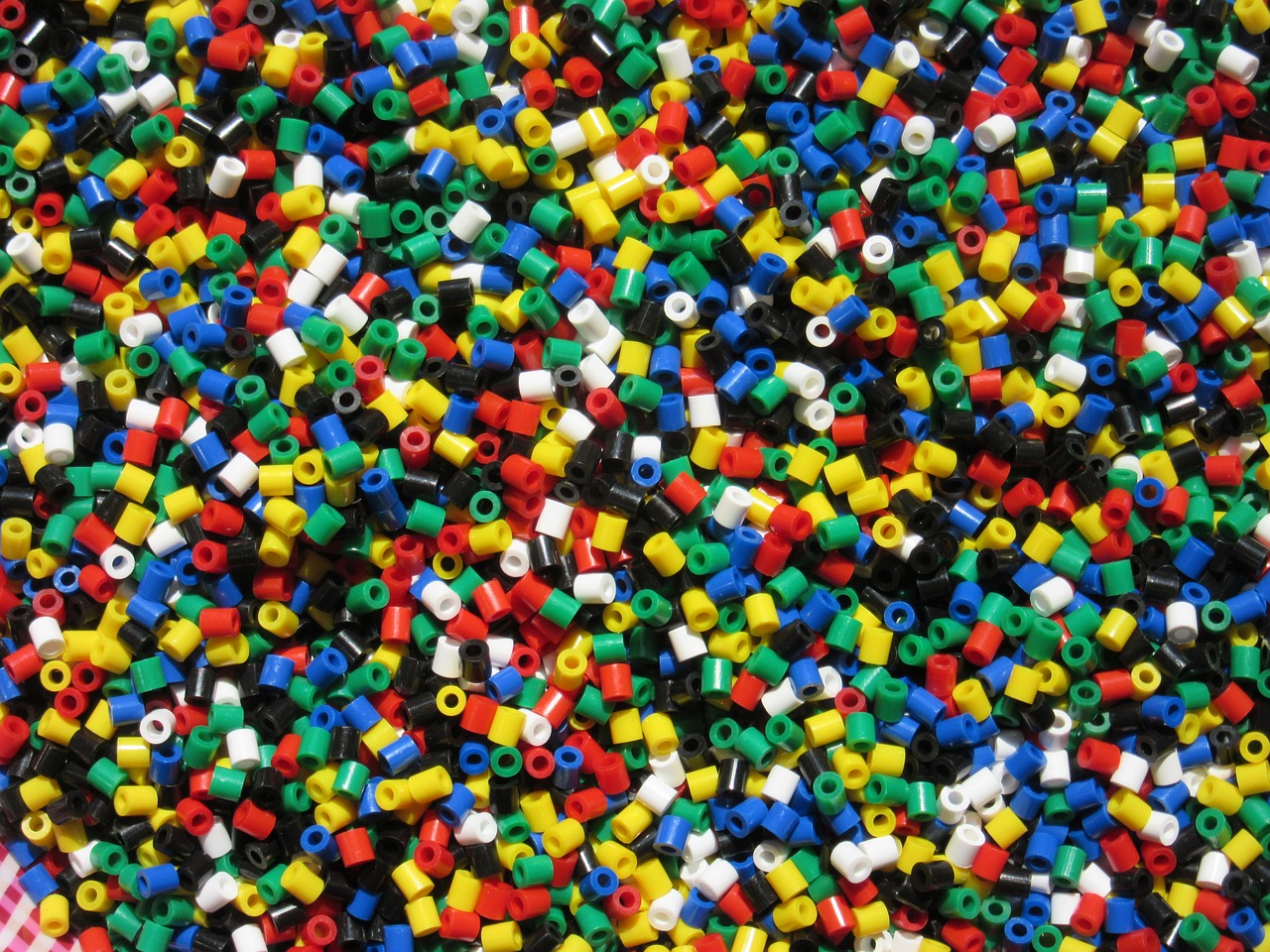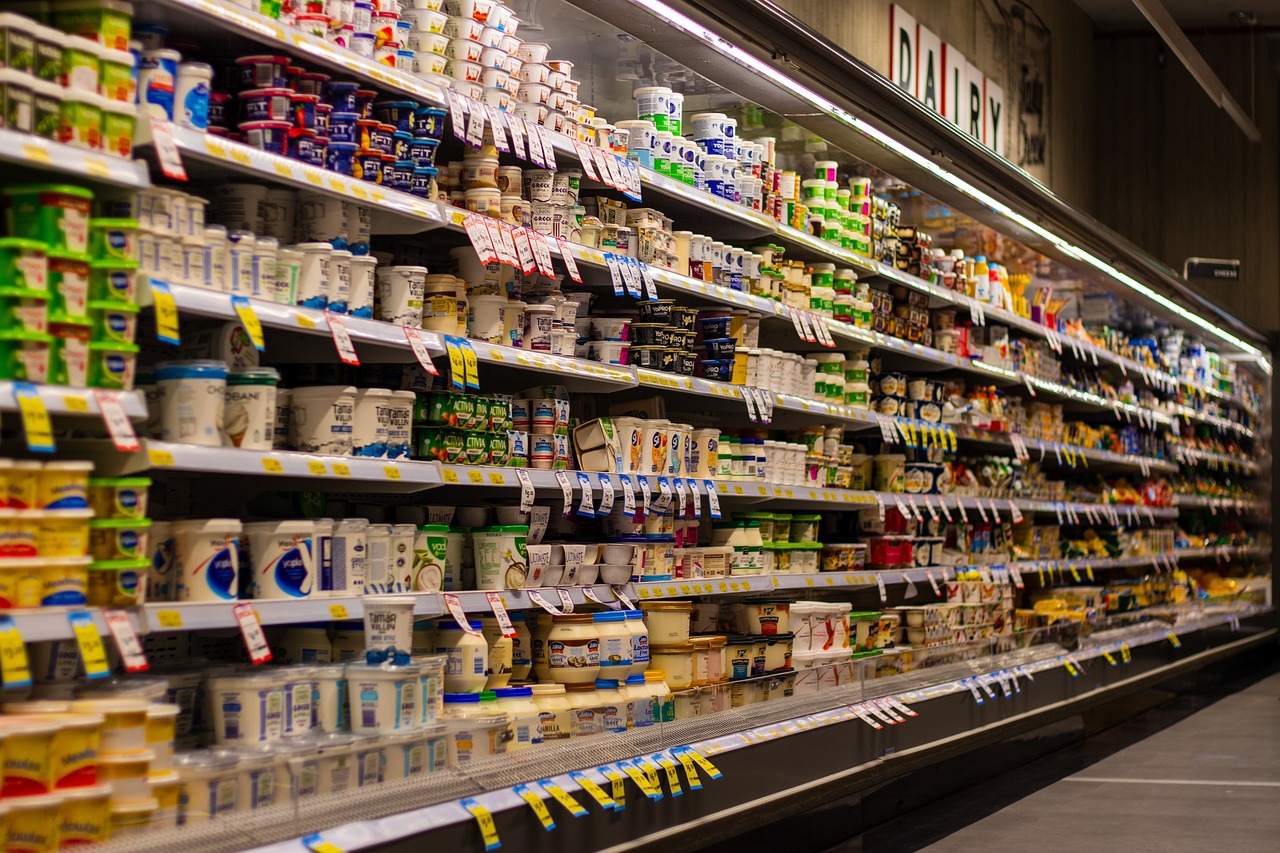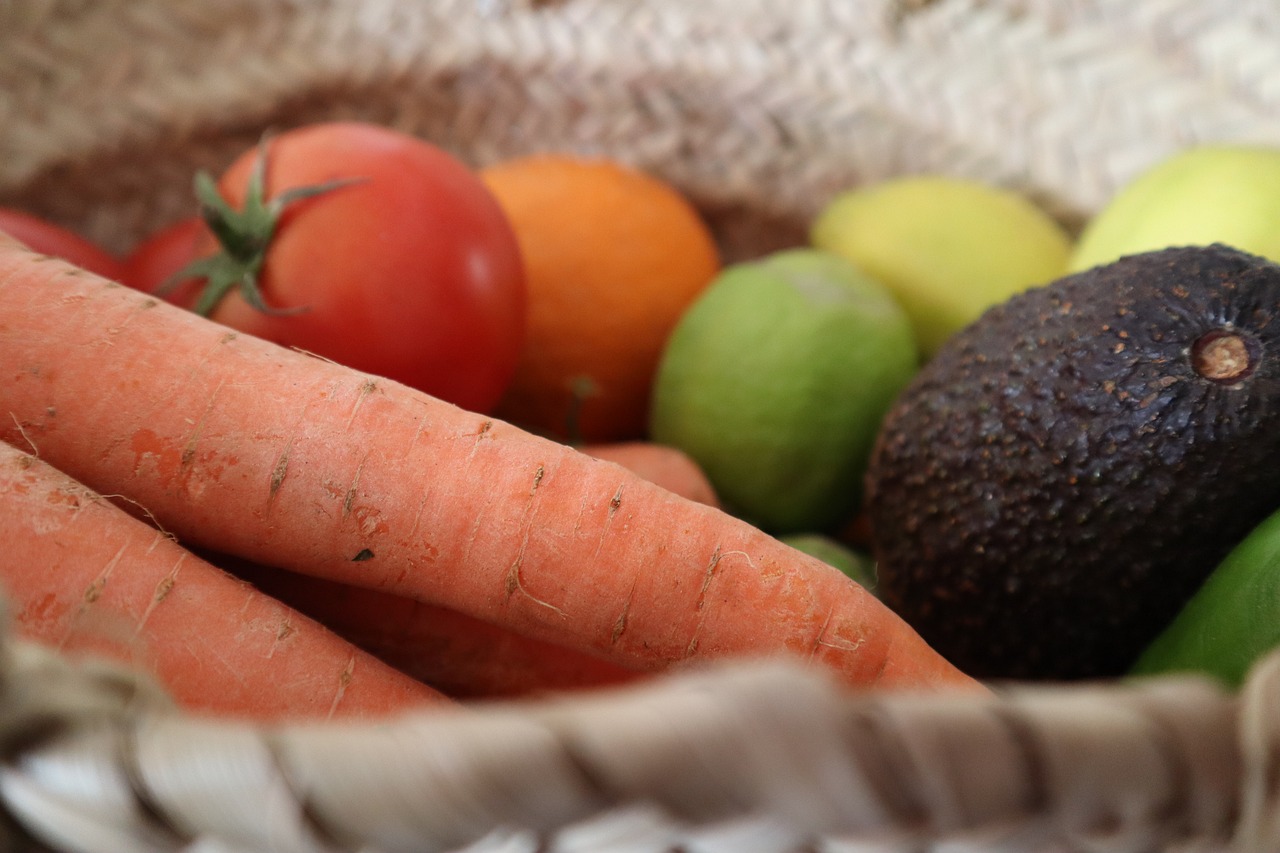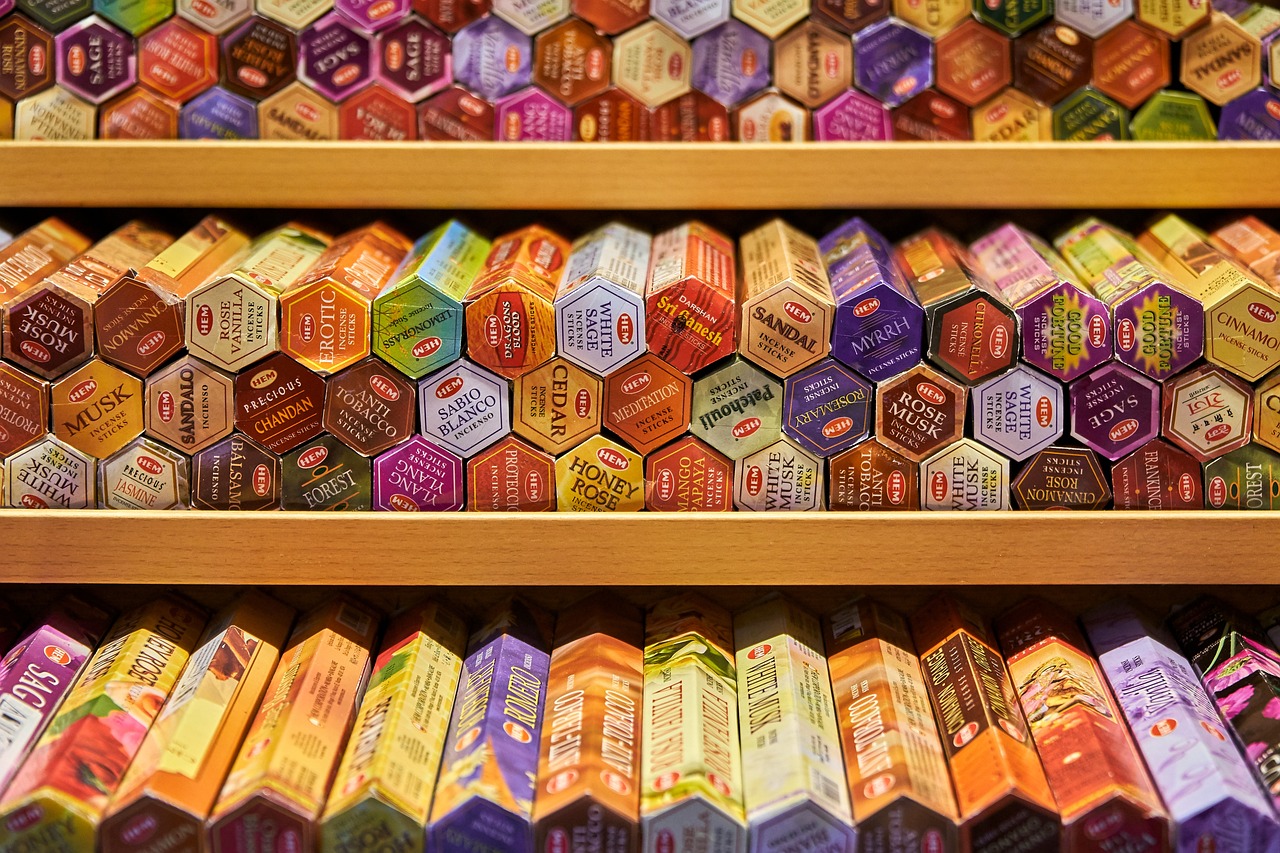Is There a Future for Plastic-Free Supermarkets?
The quest for a plastic-free supermarket might seem like a distant dream, but the reality is far more promising than it appears. With the alarming rise in plastic waste and its detrimental impact on our environment, the call for change has never been louder. Supermarkets are starting to recognize this urgent need, and many are taking significant strides toward eliminating plastic packaging. Imagine walking into a store where every product is packaged sustainably, where your shopping experience not only satisfies your cravings but also contributes positively to the planet. This vision is becoming increasingly tangible as consumers demand more eco-friendly options and as innovative solutions emerge to tackle the plastic problem.
As we navigate through this transformation, it’s essential to understand the driving forces behind these changes. The shift towards plastic-free supermarkets is not just about compliance with regulations or keeping up with trends; it’s about a fundamental change in consumer behavior and corporate responsibility. More than ever, shoppers are becoming aware of their purchasing power and its impact on the environment. They are seeking out alternatives that align with their values, and supermarkets that embrace this movement stand to benefit immensely. But what does this future look like? And what challenges lie ahead for those daring enough to pioneer this change?
In this article, we will explore the current landscape of plastic-free initiatives within supermarkets, delve into consumer attitudes towards plastic waste, and examine the innovative alternatives that are paving the way for a more sustainable shopping experience. We will also highlight successful case studies and partnerships that demonstrate the potential for a plastic-free future. So, buckle up as we embark on this journey towards reimagining the supermarket experience—one that embraces sustainability and champions a healthier planet for generations to come!

The Rise of Plastic-Free Initiatives
In recent years, the world has witnessed a remarkable shift in consumer behavior, particularly when it comes to shopping habits. Supermarkets, once synonymous with plastic bags and packaging, are now stepping up to the plate, embracing plastic-free initiatives in response to a growing demand for sustainability. This shift is not just a passing trend; it’s a reflection of a deeper understanding of the environmental impact of plastic waste. Consumers are becoming increasingly aware of the detrimental effects plastic has on our planet, and as a result, they are seeking alternatives that align with their values.
Many supermarkets are now taking proactive measures to eliminate plastic from their operations. From introducing bulk bins where shoppers can fill their own containers to offering fresh produce without plastic wrapping, these initiatives are designed to create a more sustainable shopping experience. But why are these changes happening? The answer lies in a combination of consumer pressure and a desire to foster a positive brand image. Supermarkets recognize that by adopting eco-friendly practices, they not only cater to the demands of their customers but also enhance their reputation in a competitive market.
Moreover, the rise of plastic-free initiatives is being fueled by innovative solutions and technologies. For instance, biodegradable packaging made from plant-based materials is becoming more accessible, allowing supermarkets to offer alternatives without compromising on quality or shelf life. Additionally, the concept of zero-waste shopping is gaining traction, where consumers are encouraged to bring their own containers and bags, drastically reducing the need for single-use plastics.
As we dive deeper into this movement, it’s essential to recognize the role of community engagement. Many supermarkets are hosting workshops and events to educate consumers about the importance of reducing plastic waste. These initiatives not only inform shoppers about sustainable practices but also create a sense of community around the shared goal of protecting our environment. The more people are informed, the more they are likely to support supermarkets that prioritize sustainability.
To illustrate the impact of these initiatives, let’s take a look at a few key statistics:
| Year | Percentage of Supermarkets Adopting Plastic-Free Initiatives |
|---|---|
| 2018 | 10% |
| 2019 | 25% |
| 2020 | 40% |
| 2021 | 60% |
| 2022 | 75% |
This table clearly shows a steady increase in the number of supermarkets adopting plastic-free initiatives over the years. Such data not only highlights the trend but also emphasizes the urgency for supermarkets to continue evolving in this direction. As we move forward, it’s clear that the rise of plastic-free initiatives is not merely a trend but a necessary evolution in the way we shop and consume.
In conclusion, the journey towards plastic-free supermarkets is well underway, driven by consumer demand, innovative solutions, and a collective desire for a sustainable future. As shoppers continue to prioritize eco-friendly practices, supermarkets must rise to the occasion, embracing change and leading the way towards a greener tomorrow.

Consumer Attitudes Towards Plastic Waste
In today's world, the conversation around plastic waste is more vibrant than ever. Consumers are increasingly aware of the environmental impact of plastic, and their attitudes are rapidly evolving. It's not just a trend; it's becoming a lifestyle choice for many. Shoppers are beginning to ask themselves, "Do I really need that plastic bag?" or "Is there a more sustainable option?" This shift in mindset is crucial for supermarkets as they navigate the waters of consumer preferences and sustainable practices.
Understanding consumer attitudes is essential for supermarkets looking to implement plastic-free initiatives. Recent studies indicate that a significant portion of shoppers, particularly younger generations, are willing to pay more for products that come with eco-friendly packaging. In fact, a survey conducted by EcoWatch found that over 70% of consumers expressed a desire for supermarkets to offer more plastic-free options. This growing demand is not just about personal preference; it reflects a deeper concern for the planet and future generations.
Moreover, the demographic landscape of eco-conscious shoppers is diverse. These consumers range from millennials who prioritize sustainability in their purchasing decisions to families looking to reduce their carbon footprint. Understanding these demographics is vital for supermarkets as they tailor their offerings. For instance, a recent analysis revealed that:
| Age Group | Percentage Interested in Plastic-Free Options |
|---|---|
| 18-24 | 85% |
| 25-34 | 75% |
| 35-44 | 60% |
| 45+ | 50% |
As seen in the table above, younger consumers are leading the charge for plastic-free alternatives, making it imperative for supermarkets to adapt their strategies accordingly. Additionally, the influence of social media cannot be understated. Platforms like Instagram and Twitter have become battlegrounds for environmental advocacy, with users sharing their experiences and encouraging others to make sustainable choices. This online community fosters a sense of responsibility, prompting shoppers to scrutinize their purchases more closely.
However, while the enthusiasm for plastic-free shopping is palpable, there are still hurdles to overcome. Many consumers may express a desire for sustainable options but might not know where to find them or how to incorporate them into their shopping habits. This presents an opportunity for supermarkets to educate their customers about the benefits of going plastic-free and to provide clear signage and information about available options. After all, knowledge is power, and informed consumers are more likely to make eco-friendly choices.
In conclusion, as consumer attitudes towards plastic waste continue to shift, supermarkets must pay attention. By understanding the motivations and preferences of eco-conscious shoppers, they can create an environment that not only meets demand but also fosters a culture of sustainability. The future of shopping may very well depend on how well these retailers can align their practices with the values of their customers.
- What are the main reasons consumers want plastic-free options? Many consumers are motivated by environmental concerns, health considerations, and a desire to support sustainable practices.
- How can supermarkets effectively communicate their plastic-free initiatives? Clear signage, informative campaigns, and social media engagement can help supermarkets connect with their customers about sustainable options.
- Are plastic-free products more expensive? While some plastic-free products may come at a premium, many consumers are willing to pay extra for environmentally friendly options.

Survey Insights
Recent surveys have unveiled a fascinating shift in consumer preferences, particularly when it comes to attitudes towards plastic waste in supermarkets. A significant number of shoppers are now expressing a strong desire for sustainable practices, which has led to a growing demand for eco-friendly packaging options. In fact, studies indicate that approximately 70% of consumers are willing to pay a premium for products that come in plastic-free packaging. This statistic not only highlights the urgency of the situation but also signals a potential goldmine for supermarkets willing to pivot towards sustainability.
Moreover, these surveys have shown that consumers are increasingly aware of the environmental impact of plastic waste. Many respondents indicated that they actively seek out brands that prioritize sustainability. This shift in consumer mindset is akin to a tidal wave, pushing supermarkets to reconsider their packaging strategies or risk losing loyal customers. For instance, a recent survey revealed that 58% of consumers have consciously reduced their plastic usage in their daily lives, reflecting a broader trend towards eco-conscious living.
To dig deeper into these insights, we can break down the survey results by demographics. The findings reveal that younger generations, particularly Millennials and Gen Z, are leading the charge towards plastic-free shopping. These age groups are not only more likely to support brands with sustainable practices but are also vocal about their preferences on social media platforms. This trend suggests that supermarkets must not only adapt their offerings but also engage with these consumers through effective marketing strategies that resonate with their values.
| Age Group | Percentage Supporting Plastic-Free Options |
|---|---|
| 18-24 | 82% |
| 25-34 | 77% |
| 35-44 | 65% |
| 45+ | 50% |
This table clearly illustrates that younger shoppers are significantly more inclined to favor supermarkets that offer plastic-free alternatives. It's not just about preference; it's about a movement towards sustainability that is gaining momentum. Supermarkets that fail to recognize this trend may find themselves outpaced by competitors who are more in tune with the evolving values of their customers.
In conclusion, the insights gathered from recent surveys paint a promising yet challenging picture for supermarkets. The demand for plastic-free options is not just a passing trend; it’s a reflection of a deeper societal shift towards sustainability. Supermarkets that embrace this change and actively promote their eco-friendly initiatives are likely to attract a loyal customer base eager to support responsible shopping practices.
- What are plastic-free supermarkets?
Plastic-free supermarkets are stores that eliminate plastic packaging, opting for sustainable alternatives like biodegradable materials and reusable containers. - Why is there a demand for plastic-free shopping?
Consumers are becoming increasingly aware of the environmental impact of plastic waste, leading to a preference for sustainable shopping options. - How can supermarkets transition to plastic-free options?
Supermarkets can adopt various strategies, including sourcing biodegradable packaging, encouraging bulk purchases, and partnering with eco-friendly brands.

Demographics of Eco-Conscious Shoppers
Understanding the demographics of eco-conscious shoppers is essential for supermarkets aiming to transition to plastic-free operations. These shoppers are not just a niche market; they represent a growing segment of the population that prioritizes sustainability in their purchasing decisions. Recent studies indicate that eco-conscious consumers tend to be younger, with a significant portion falling within the 18 to 34 age range. This demographic is often more educated and socially aware, making them more likely to seek out products that align with their values.
Moreover, gender plays a role in eco-conscious shopping habits. Research shows that women are generally more inclined to support sustainable practices compared to men, often leading the charge in advocating for plastic-free products. However, men are increasingly joining this movement, especially as awareness of environmental issues continues to rise. This shift is crucial for supermarkets to recognize, as it indicates a broader societal trend towards sustainability.
Income levels also influence eco-conscious shopping behavior. While it’s a common misconception that only affluent consumers can afford eco-friendly products, many shoppers across various income brackets are willing to pay a premium for sustainable options. In fact, a survey conducted by GreenBiz revealed that a significant percentage of consumers earning less than $50,000 annually still prioritize environmentally friendly products when shopping.
| Demographic Factor | Characteristics |
|---|---|
| Age | Majority are aged 18-34 |
| Gender | Women lead in eco-conscious shopping, but men are catching up |
| Income Level | Consumers across all income brackets prioritize sustainable options |
Additionally, geographic location plays a critical role in shaping the behaviors of eco-conscious shoppers. Urban areas tend to have a higher concentration of consumers who are actively seeking out plastic-free and sustainable alternatives, driven by greater access to specialty stores and farmers' markets. In contrast, rural shoppers may have limited options, which can hinder their ability to make environmentally friendly choices.
In conclusion, supermarkets that want to thrive in this evolving landscape must consider these demographic factors. By tailoring their offerings and marketing strategies to resonate with eco-conscious shoppers, they can create a more sustainable shopping experience that not only meets consumer demands but also contributes positively to the environment.
- What defines an eco-conscious shopper? Eco-conscious shoppers prioritize sustainability in their purchasing decisions, often seeking out products that are environmentally friendly and free from plastic packaging.
- Are eco-conscious shoppers willing to pay more for sustainable products? Yes, many eco-conscious consumers are willing to pay a premium for products that align with their values, regardless of their income level.
- How can supermarkets attract eco-conscious shoppers? Supermarkets can attract these shoppers by offering a wider range of sustainable products, implementing plastic-free initiatives, and promoting their commitment to environmental responsibility.

Impact of Social Media
In today's digital age, social media is more than just a platform for sharing selfies and memes; it's a powerful tool that shapes our perceptions and behaviors, especially when it comes to shopping habits. As consumers become increasingly aware of the environmental impact of their choices, platforms like Instagram, Facebook, and Twitter serve as vital channels for spreading awareness about plastic waste and promoting sustainable alternatives. Have you ever noticed how a single viral post can spark a movement? That's the magic of social media!
Through engaging content, influencers, and community discussions, social media is driving a significant shift in consumer attitudes towards plastic usage. For instance, brands that showcase their commitment to sustainability often gain traction online, encouraging others to follow suit. Users are not just passive consumers; they actively seek out brands that align with their values, which means supermarkets that ignore these trends risk losing their customer base. The pressure to adopt eco-friendly practices is mounting, and social media is fueling that fire.
Moreover, the impact of social media is evident in the way shoppers share their experiences. When someone posts a picture of their plastic-free grocery haul, it not only inspires their followers but also creates a ripple effect, prompting others to consider similar choices. This phenomenon can be summarized in a simple equation: Engagement + Awareness Action. The more people engage with sustainable content, the more likely they are to take action in their own lives.
To illustrate the influence of social media on consumer behavior, consider the following statistics:
| Platform | Percentage of Users Influenced by Sustainability Content |
|---|---|
| 70% | |
| 65% | |
| 55% |
These numbers highlight the immense potential of social media to influence shopping behaviors. As supermarkets strive to become more sustainable, they can leverage these platforms to communicate their initiatives, educate consumers about plastic alternatives, and foster a community of eco-conscious shoppers. By sharing stories of their journeys towards plastic-free operations, supermarkets can not only enhance their brand image but also build a loyal customer base that values sustainability.
In conclusion, the impact of social media on consumer attitudes towards plastic waste is profound. It serves as a catalyst for change, encouraging shoppers to rethink their purchasing habits and support brands that prioritize sustainability. Supermarkets that embrace this digital revolution and engage with their customers on social media will not only stay relevant but also lead the charge towards a plastic-free future.
- What are plastic-free supermarkets? Plastic-free supermarkets are grocery stores that eliminate or significantly reduce plastic packaging, offering sustainable alternatives.
- How can I support plastic-free initiatives? You can support these initiatives by shopping at plastic-free stores, choosing products with eco-friendly packaging, and advocating for sustainable practices.
- Are there any successful examples of plastic-free supermarkets? Yes, many supermarkets around the world have successfully implemented plastic-free initiatives, showcasing innovative solutions and alternatives.

Challenges in Implementation
Transitioning to a plastic-free supermarket model is not as simple as it sounds. While the idea of a sustainable shopping experience is appealing, there are significant challenges that supermarkets must navigate to make this vision a reality. One of the primary obstacles is the complexity of the supply chain. Many suppliers still rely heavily on plastic packaging for their products, and moving away from these established practices requires time, resources, and collaboration. Supermarkets must engage with suppliers to find alternative packaging solutions, which can be a lengthy and complicated process.
Moreover, consumer education plays a pivotal role in this transition. Many shoppers are accustomed to the convenience that plastic packaging offers, such as freshness and portability. Supermarkets need to invest in educational campaigns to inform consumers about the benefits of plastic-free alternatives, such as reusable containers and bulk purchasing options. This could involve in-store demonstrations, social media outreach, and informational signage that explains how these changes contribute to a healthier planet.
Additionally, the cost of sustainable packaging can be a barrier. Many eco-friendly alternatives are still more expensive than traditional plastic options. This can lead to higher prices for consumers, which may deter some shoppers from making the switch. Supermarkets must balance the need for affordable pricing with their commitment to sustainability. They might consider implementing loyalty programs or discounts for customers who choose plastic-free options, making it more attractive for shoppers to support these initiatives.
Another challenge is the infrastructure required for implementing bulk buying systems and reusable container programs. Supermarkets need to redesign their layout and operations to accommodate these changes. This might mean investing in new technology, such as refill stations for bulk goods or systems for tracking reusable containers. The initial investment can be daunting, but the long-term benefits of reduced plastic waste and increased customer loyalty can outweigh these costs.
In summary, while the transition to plastic-free supermarkets is fraught with challenges, it is not impossible. By addressing supply chain complexities, educating consumers, managing costs, and investing in new infrastructure, supermarkets can pave the way for a more sustainable future. The journey may be challenging, but the potential rewards—both for the environment and for the supermarket's bottom line—are well worth the effort.
- What are the main challenges supermarkets face in going plastic-free?
Supermarkets face issues such as supply chain complexities, consumer education needs, higher costs for sustainable packaging, and the need for new infrastructure. - How can supermarkets educate consumers about plastic-free options?
They can use in-store demonstrations, social media campaigns, and informative signage to highlight the benefits of sustainable practices. - Are sustainable packaging alternatives more expensive?
Yes, many eco-friendly packaging options are currently more costly than traditional plastic, which can lead to higher prices for consumers. - What are some examples of innovative packaging solutions?
Examples include biodegradable materials, reusable containers, and bulk purchasing systems that reduce plastic waste.

Innovative Alternatives to Plastic Packaging
As the world increasingly recognizes the detrimental impact of plastic on our environment, supermarkets are beginning to explore innovative alternatives to plastic packaging. The shift towards sustainability is not just a trend; it's becoming a necessity. Imagine walking into a supermarket where every product is wrapped in materials that are biodegradable, compostable, or even reusable. This vision is not far from reality, thanks to the creativity and determination of businesses committed to reducing plastic waste.
One of the most exciting alternatives gaining traction is biodegradable packaging. Made from natural materials such as cornstarch or sugarcane, these packages break down much faster than traditional plastics, minimizing their environmental footprint. Supermarkets can adopt this type of packaging for various products, from fresh produce to snacks. For instance, several brands have started using biodegradable trays for fruits and vegetables, allowing consumers to shop guilt-free.
Another promising option is the use of reusable containers. Some supermarkets are now offering customers the chance to bring their own containers for bulk items, such as grains, nuts, and even liquids like oils and vinegar. This not only reduces plastic waste but also encourages a more conscious shopping experience. Imagine filling up your own stylish glass jar with your favorite granola or selecting fresh olives from a bulk bin. It’s like a trip back to the good old days of shopping, but with a modern twist!
Additionally, supermarkets are beginning to embrace bulk purchasing options. By allowing customers to buy in bulk, supermarkets can significantly cut down on packaging waste. This model not only benefits the environment but also helps consumers save money. For example, purchasing larger quantities of items like pasta or rice can lead to substantial savings over time. Plus, it reduces the number of plastic bags and containers that typically accompany smaller purchases.
| Alternative Packaging Type | Benefits | Examples |
|---|---|---|
| Biodegradable Packaging | Breaks down quickly, reduces landfill waste | Fruit and vegetable trays |
| Reusable Containers | Encourages conscious shopping, reduces single-use plastics | Bulk items like grains and liquids |
| Bulk Purchasing | Saves money, minimizes packaging waste | Pasta, rice, nuts |
In addition to these alternatives, many supermarkets are also exploring edible packaging. Yes, you heard that right! Edible films made from seaweed or rice can wrap foods, allowing consumers to eat the packaging along with the product. This not only eliminates waste but also adds a fun and unique element to the shopping experience. Imagine biting into a snack that comes with its own edible wrapper—how cool is that?
As these innovative alternatives continue to emerge, it’s clear that the future of supermarkets is leaning towards a plastic-free ethos. The collaboration between supermarkets and eco-friendly brands is vital in this transformation. By partnering with companies that specialize in sustainable packaging solutions, supermarkets can enhance their product offerings and appeal to a growing market of eco-conscious consumers.
In conclusion, the journey towards plastic-free supermarkets is filled with exciting possibilities. With the right innovations and consumer support, we can create a shopping experience that is not only enjoyable but also sustainable. The question remains: are you ready to embrace a future where shopping is guilt-free and environmentally friendly?
- What are biodegradable packaging materials? Biodegradable packaging materials are made from natural substances that can decompose in the environment, reducing waste.
- How can I shop sustainably at my local supermarket? You can shop sustainably by bringing your own reusable bags, opting for bulk items, and choosing products with minimal or no packaging.
- Are there supermarkets that are already plastic-free? Yes, several supermarkets around the world are leading the way by implementing plastic-free initiatives and offering sustainable alternatives.
- What is edible packaging? Edible packaging is made from food-grade materials that consumers can eat, reducing waste and adding a unique twist to food products.

Case Studies of Successful Models
When it comes to pioneering the movement towards plastic-free supermarkets, several models stand out as beacons of innovation and sustainability. These supermarkets have not only embraced the challenge but have also inspired others in the industry to follow suit. One notable example is Unpackaged, a London-based store that has made waves by offering a completely plastic-free shopping experience. Customers are encouraged to bring their own containers to fill with bulk goods, ranging from grains to cleaning products, effectively eliminating the need for plastic packaging. This model not only reduces waste but also fosters a sense of community among shoppers who are passionate about sustainability.
Another remarkable case is Bio-Company, a German supermarket chain that has successfully integrated eco-friendly practices into its operations. Bio-Company has focused on sourcing products from local suppliers, which not only minimizes transportation emissions but also supports the local economy. Their commitment to sustainability is evident in their use of biodegradable packaging and a variety of reusable options available for customers. The supermarket has reported increased customer loyalty as shoppers appreciate their efforts to protect the environment.
In addition to these examples, the Zero Waste Store in Portugal has become a model for communities looking to reduce plastic waste. This store operates on a simple principle: customers can bring their own jars and bags to purchase everything from fresh produce to personal care items. The store has successfully created a shopping experience that emphasizes sustainability while also being budget-friendly. Their success has sparked a movement across Europe, encouraging other retailers to consider similar approaches.
These successful models demonstrate that the transition to plastic-free supermarkets is not only possible but can also be profitable. By examining their strategies, other retailers can learn valuable lessons about consumer engagement, supply chain management, and the importance of community involvement. As supermarkets continue to explore innovative solutions, these case studies serve as a roadmap for creating a more sustainable future.
To further illustrate the impact of these models, consider the following table that outlines key strategies employed by these supermarkets:
| Supermarket | Key Strategies | Impact |
|---|---|---|
| Unpackaged | Bulk goods, customer containers | Zero plastic waste, community engagement |
| Bio-Company | Local sourcing, biodegradable packaging | Reduced emissions, customer loyalty |
| Zero Waste Store | Bring your own containers, budget-friendly | Increased awareness, European movement |
As we look to the future, these case studies highlight the potential for supermarkets to not only reduce plastic waste but also to thrive in an increasingly eco-conscious market. By adopting similar strategies, more supermarkets can make significant strides toward a sustainable shopping experience that resonates with today’s environmentally aware consumers.

Partnerships with Eco-Friendly Brands
In the quest for a plastic-free future, supermarkets are increasingly recognizing the value of partnerships with eco-friendly brands. These collaborations not only enhance the supermarket's sustainability credentials but also provide consumers with a broader selection of environmentally responsible products. By joining forces with brands that prioritize sustainability, supermarkets can create a powerful synergy that resonates with today's eco-conscious shoppers.
One of the key benefits of these partnerships is the ability to leverage each other's strengths. Eco-friendly brands often have innovative solutions and products that can help supermarkets reduce their plastic footprint. For instance, a supermarket might partner with a company that produces biodegradable packaging or one that specializes in bulk food options, allowing customers to bring their own containers. This not only minimizes plastic waste but also promotes a circular economy where resources are reused rather than discarded.
Furthermore, these partnerships can enhance brand loyalty among consumers. Shoppers are more likely to support supermarkets that align with their values, and by showcasing eco-friendly brands, supermarkets can attract a dedicated customer base. For example, a survey revealed that 70% of consumers are more inclined to shop at stores that offer sustainable products. This shift in consumer behavior emphasizes the importance of supermarkets being proactive in their sustainability efforts.
Additionally, partnerships with eco-friendly brands can lead to exciting marketing opportunities. Supermarkets can run promotional campaigns that highlight their commitment to sustainability, showcasing the eco-friendly products available in-store. This not only educates consumers about their choices but also encourages them to make more sustainable purchasing decisions. Moreover, social media can amplify these efforts, allowing supermarkets to reach a wider audience and engage with consumers who are passionate about the environment.
To illustrate the impact of these partnerships, consider the following table that outlines some notable collaborations:
| Supermarket | Eco-Friendly Brand | Product Focus |
|---|---|---|
| GreenGrocer | EcoPack | Biodegradable packaging |
| FreshMart | BulkBuddies | Reusable bulk containers |
| Nature's Basket | ZeroWaste Co. | Refillable cleaning products |
As we look to the future, the potential for supermarkets to thrive through partnerships with eco-friendly brands seems boundless. These collaborations not only contribute to a more sustainable shopping experience but also foster a community of like-minded individuals who are passionate about reducing plastic waste. By embracing these partnerships, supermarkets can take significant strides toward a cleaner, greener planet.
- What are eco-friendly brands? Eco-friendly brands focus on producing products that have minimal impact on the environment, often using sustainable materials and practices.
- How can supermarkets benefit from partnering with eco-friendly brands? Partnerships can enhance a supermarket's sustainability image, attract eco-conscious consumers, and provide innovative solutions to reduce plastic waste.
- Are there any successful examples of these partnerships? Yes, many supermarkets have successfully collaborated with eco-friendly brands to offer biodegradable packaging, bulk purchasing options, and more.

Future Trends in Sustainable Supermarkets
As we look to the horizon, the future of sustainable supermarkets is brimming with exciting possibilities. With the increasing awareness of environmental issues, supermarkets are not just places to buy groceries anymore; they are transforming into hubs of sustainability. Imagine walking into a store where every product is thoughtfully sourced, packaged, and presented, all while minimizing your carbon footprint. This vision is becoming more tangible as supermarkets embrace innovative practices and technologies that cater to eco-conscious consumers.
One of the most significant trends is the integration of smart technology in grocery shopping. From apps that help you locate plastic-free products to smart carts that track your purchases and suggest sustainable alternatives, technology is enhancing the shopping experience. These advancements not only make shopping more convenient but also educate consumers about their choices. For instance, imagine an app that scans products and provides instant feedback on their environmental impact—how cool would that be?
Moreover, the rise of local sourcing is reshaping the supermarket landscape. Consumers are increasingly inclined to support local farmers and producers, which not only reduces transportation emissions but also fosters community relationships. Supermarkets are responding by dedicating sections to local goods, showcasing everything from organic vegetables to artisanal bread. This shift not only satisfies the growing demand for transparency in food sourcing but also promotes a circular economy that benefits local economies.
Another exciting trend is the emergence of zero-waste stores. These stores are designed to minimize waste by encouraging customers to bring their own containers for bulk purchases. This model not only cuts down on plastic packaging but also empowers consumers to take an active role in their sustainability journey. Picture a store where you can fill up on grains, spices, and even liquids without the guilt of single-use plastics—it's a win-win for both the planet and your wallet!
Furthermore, supermarkets are beginning to explore biodegradable and compostable packaging alternatives. While traditional plastic has long been the go-to for food packaging, innovations in materials are paving the way for sustainable options that can decompose naturally. For instance, some companies are experimenting with packaging made from seaweed or plant-based materials that offer the same durability as plastic without the environmental toll. This shift could drastically reduce plastic waste in landfills and oceans.
In addition to these tangible changes, the cultural shift towards sustainability is influencing how supermarkets market their products. Brands are increasingly focusing on transparency and storytelling, engaging consumers with narratives about their sustainability practices. This not only builds trust but also fosters a sense of community among shoppers who share similar values. Think about it: when you know the story behind your food, it adds a personal touch that makes your shopping experience more meaningful.
As we navigate through these trends, it's essential to recognize the role of education and advocacy in shaping consumer behavior. Supermarkets are becoming platforms for environmental education, hosting workshops and events that teach customers about sustainable practices, from reducing food waste to understanding eco-labels. By empowering consumers with knowledge, supermarkets can inspire them to make more informed choices, ultimately leading to a more sustainable future.
In summary, the future of sustainable supermarkets is not just a trend; it's a movement towards a more responsible and conscious way of shopping. With the integration of technology, local sourcing, zero-waste initiatives, innovative packaging, and educational efforts, supermarkets are poised to lead the charge in creating a plastic-free world. As consumers, we have the power to support these changes by choosing to shop at stores that align with our values. So, the next time you hit the aisles, consider the impact of your choices—because every little bit helps in the journey towards sustainability.
- What are plastic-free supermarkets? Plastic-free supermarkets are grocery stores that aim to eliminate plastic packaging, offering products in bulk or using sustainable materials instead.
- How can I support plastic-free initiatives? You can support these initiatives by shopping at stores that prioritize sustainability, bringing your own containers, and choosing products with minimal or no packaging.
- Are there any benefits to shopping at sustainable supermarkets? Yes! Shopping at sustainable supermarkets can help reduce plastic waste, support local economies, and promote environmentally friendly practices.
Frequently Asked Questions
- What are plastic-free supermarkets?
Plastic-free supermarkets are retail stores that aim to eliminate plastic packaging from their products. They focus on providing sustainable alternatives, such as bulk bins, glass containers, and biodegradable packaging, to reduce plastic waste and promote eco-friendly shopping practices.
- Why are plastic-free initiatives becoming popular?
With increasing awareness of environmental issues, consumers are demanding more sustainable shopping options. Supermarkets are responding to this trend by adopting plastic-free initiatives to attract eco-conscious shoppers and contribute to reducing plastic pollution.
- How do consumers feel about plastic waste?
Many consumers are increasingly concerned about plastic waste and its impact on the environment. Surveys indicate that shoppers are willing to support supermarkets that offer plastic-free alternatives, showcasing a shift towards more responsible purchasing habits.
- What challenges do supermarkets face in going plastic-free?
Transitioning to plastic-free operations presents several challenges, including supply chain issues, higher costs for sustainable materials, and the need for consumer education on the benefits of plastic-free shopping options.
- What alternatives to plastic packaging are available?
Supermarkets can adopt various alternatives to plastic packaging, such as biodegradable materials, reusable containers, and bulk purchasing options. These solutions help minimize waste while still providing customers with convenient shopping experiences.
- Are there successful examples of plastic-free supermarkets?
Yes! Several supermarkets around the world have successfully implemented plastic-free strategies. These case studies provide valuable insights and inspiration for other retailers looking to adopt similar practices.
- How does social media influence consumer attitudes towards plastic waste?
Social media plays a crucial role in shaping public opinion about environmental issues, including plastic waste. It raises awareness and encourages consumers to demand more sustainable practices from supermarkets, influencing their shopping behaviors.
- What future trends can we expect in sustainable supermarkets?
Emerging trends in sustainable supermarkets include advancements in technology that facilitate eco-friendly practices, shifts in consumer behavior towards sustainability, and an increase in partnerships with eco-friendly brands to offer a wider range of plastic-free products.



















